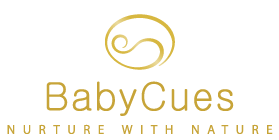2017 World Health Organisation Guidelines for breastfeeding

The World Health Organisation have released the updated 2017 guidelines for ‘protecting, promoting, supporting breastfeeding in facilities providing maternity and newborn services.’
'This guideline is an update of, and supersedes, the Ten Steps to Successful Breastfeeding, as published in a joint statement by WHO and UNICEF in 1989, Protecting, promoting and supporting breastfeeding: the special role of maternity services. It complements the operational guidance of the Innocenti Declaration on the protection, promotion and support of breastfeeding, adopted in Florence, Italy in 1990, and the Innocenti Declaration 2005 on infant and young child feeding, published in 2005. It also complements some of the implementation guidance of the Baby-friendly Hospital Initiative, published in 1991 and updated in 2009 (only inasmuch as aspects of the Ten Steps to Successful Breastfeeding remain unchanged).'
The levels of evidence for each recommendation are listed below. 'According to the GRADE-CERQual, high confidence indicates that it is highly likely that the review finding is a reasonable representation of the phenomenon of interest. Moderate confidence indicates that it is likely that the review finding is a reasonable representation of the phenomenon of interest. Low confidence indicates that it is possible that the review finding is a reasonable representation of the phenomenon of interest. Very low confidence indicates that it is not clear whether the review finding is a reasonable representation of the phenomenon of interest.'
Recommendations
Immediate support to initiate and establish breastfeeding
- Early and uninterrupted skin-to-skin contact between mothers and infants should be facilitated and encouraged as soon as possible after birth (recommended, moderate-quality evidence).
- All mothers should be supported to initiate breastfeeding as soon as possible after birth, within the first hour after delivery (recommended, high-quality evidence).
- Mothers should receive practical support to enable them to initiate and establish breastfeeding and manage common breastfeeding difficulties (recommended, moderate-quality evidence).
- Mothers should be coached on how to express breast milk as a means of maintaining lactation in the event of their being separated temporarily from their infants (recommended, very low-quality evidence).
- Facilities providing maternity and newborn services should enable mothers and their infants to remain together and to practise rooming-in throughout the day and night. This may not apply in circumstances when infants need to be moved for specialized medical care (recommended, moderate-quality evidence).
- Mothers should be supported to practise responsive feeding as part of nurturing care (recommended, very low-quality evidence).
Feeding practices and additional needs of infants
- Mothers should be discouraged from giving any food or fluids other than breast milk, unless medically indicated (recommended, moderate-quality evidence).
- Mothers should be supported to recognize their infants’ cues for feeding, closeness and comfort, and enabled to respond accordingly to these cues with a variety of options, during their stay at the facility providing maternity and newborn services (recommended, high-quality evidence).
- For preterm infants who are unable to breastfeed directly, non-nutritive sucking and oral stimulation may be beneficial until breastfeeding is established (recommended, low-quality evidence).
- If expressed breast milk or other feeds are medically indicated for term infants, feeding methods such as cups, spoons or feeding bottles and teats may be used during their stay at the facility (recommended, moderate-quality evidence).
- If expressed breast milk or other feeds are medically indicated for preterm infants, feeding methods such as cups or spoons are preferable to feeding bottles and teats (recommended, moderate-quality evidence).
Creating an enabling environment
- Facilities providing maternity and newborn services should have a clearly written breastfeeding policy that is routinely communicated to staff and parents (recommended, very low-quality evidence).
- Health-facility staff who provide infant feeding services, including breastfeeding support, should have sufficient knowledge, competence and skills to support women to breastfeed (recommended, very low-quality evidence).
- Where facilities provide antenatal care, pregnant women and their families should be counselled about the benefits and management of breastfeeding (recommended, moderate-quality evidence).
- As part of protecting, promoting and supporting breastfeeding, discharge from facilities providing maternity and newborn services should be planned for and coordinated, so that parents and their infants have access to ongoing support and receive appropriate care (recommended, low-quality evidence).
References
Full document http://apps.who.int/iris/bitstream/10665/259386/1/9789241550086-eng.pdf?ua=1
Summary document http://www.who.int/nutrition/publications/guidelines/breastfeeding-facilities-maternity-newborn-summary.pdf?ua=1
This work is available under the Creative Commons Attribution-NonCommercial-ShareAlike 3.0 IGO licence (CC BY-NC-SA 3.0 IGO; https://creativecommons.org/licenses/by-nc-sa/3.0/igo/



